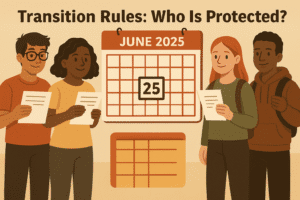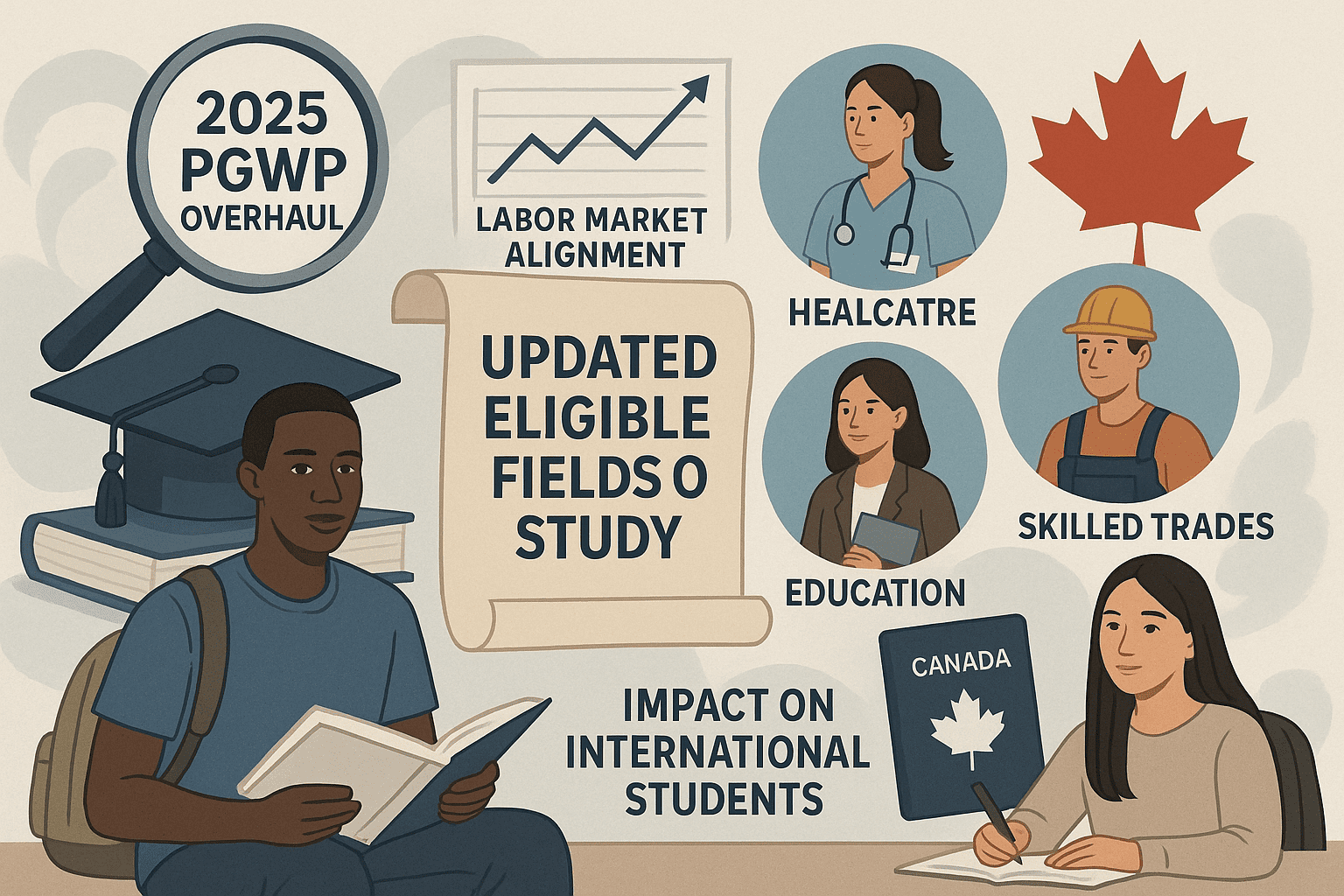Canada’s recent update to the Post Graduation Work Permit (PGWP) program marks a significant shift in how international students can transition to the Canadian workforce. The government’s decision to realign PGWP eligibility with current labour market needs is a strategic response to Canada’s evolving economic landscape.
Why This Change Now?
The Canadian labour market has been experiencing persistent shortages in specific sectors, particularly in healthcare, education, and skilled trades. By updating the PGWP-eligible fields, the government aims to attract international talent to these priority areas, ensuring that graduates have strong employment prospects while also addressing gaps in the workforce.
What Fields Are Now Favoured?
Healthcare & Social Services: There is a renewed emphasis on programs such as veterinary technology, dentistry, lab technology, optometry, and various allied health professions. These areas are critical as Canada faces an aging population and increased demand for health services.
Education: For the first time, a wide range of education programs—including early childhood, elementary, and subject-specific teaching—are PGWP-eligible. This move is designed to help fill teaching shortages across the country.
Skilled Trades: Construction engineering, CNC machinist, culinary arts, and other technical trades are now prioritized. These roles are essential for infrastructure development and economic growth.
What’s No Longer Eligible?
Fields that are no longer experiencing labour shortages have been removed from the PGWP list. This includes many programs in:
- Transport: Aviation, logistics, and supply chain management roles.
- Agriculture: Most agricultural business and management programs, as well as crop and dairy production.
- Environmental Studies & Some STEM: Environmental science, web and digital media design, and several engineering disciplines like aerospace and computer engineering.
- Other Trades: Solar energy technology, electrical and power transmission, and certain machine shop trades.
Transition Rules: Who Is Protected?
If you applied for a study permit before June 25, 2025, you are “grandfathered” in—meaning you’ll remain eligible for a PGWP even if your program has since been removed from the list. This ensures fairness for students who made education decisions based on the previous criteria.
The Bigger Picture: What Does This Mean for Students?
Greater Certainty: Students can be more confident that their studies will lead to in-demand jobs and a smoother pathway to Canadian permanent residency.
Need for Careful Planning: Prospective students must now pay close attention to the CIP (Classification of Instructional Programs) code of their intended program and verify its eligibility at the time of their application.
Dynamic Eligibility: The list of eligible fields will continue to evolve based on labour market data, so staying informed is crucial.
Planning Your Path: What Applicants Should Know
- Check the Latest List: Before applying, consult the official IRCC website for the most up-to-date list of eligible programs.
- Consider Labour Market Trends: Choose programs that align with sectors facing long-term shortages for better work and immigration prospects.
- Consult an Expert: If unsure, seek advice from a qualified immigration consultant or educational advisor to ensure your chosen field remains eligible.
These changes underscore Canada’s commitment to a responsive, skills-based immigration system—one that benefits both international graduates and the nation’s economic future


Leave a Reply